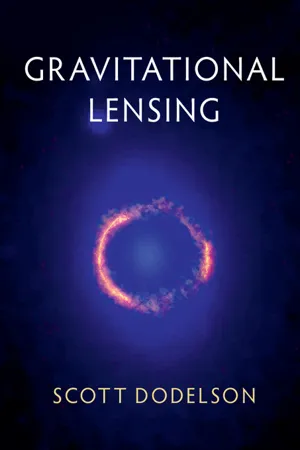Gravitational Lensing
About this book
Gravitational lensing is a consequence of general relativity, where the gravitational force due to a massive object bends the paths of light originating from distant objects lying behind it. Using very little general relativity and no higher level mathematics, this text presents the basics of gravitational lensing, focusing on the equations needed to understand the phenomena. It then applies them to a diverse set of topics, including multiply imaged objects, time delays, extrasolar planets, microlensing, cluster masses, galaxy shape measurements, cosmic shear, and lensing of the cosmic microwave background. This approach allows undergraduate students and others to get quickly up to speed on the basics and the important issues. The text will be especially relevant as large surveys such as LSST and Euclid begin to dominate the astronomical landscape. Designed for a one semester course, it is accessible to anyone with two years of undergraduate physics background.
Frequently asked questions
- Essential is ideal for learners and professionals who enjoy exploring a wide range of subjects. Access the Essential Library with 800,000+ trusted titles and best-sellers across business, personal growth, and the humanities. Includes unlimited reading time and Standard Read Aloud voice.
- Complete: Perfect for advanced learners and researchers needing full, unrestricted access. Unlock 1.4M+ books across hundreds of subjects, including academic and specialized titles. The Complete Plan also includes advanced features like Premium Read Aloud and Research Assistant.
Please note we cannot support devices running on iOS 13 and Android 7 or earlier. Learn more about using the app.
Information
Table of contents
- Cover
- Half-title page
- Title page
- Copyright page
- Dedication
- Contents
- Preface
- 1 Overview
- 2 Deflection of Light
- 3 Multiple Images
- 4 Magnification
- 5 Microlensing
- 6 Weak Lensing: Galaxy Shapes
- 7 Mass from Shapes
- 8 Cosmic Shear
- 9 Lensing of the Cosmic Microwave Background
- Appendix A Numbers
- Appendix B Lensing Formulae
- References
- Index
